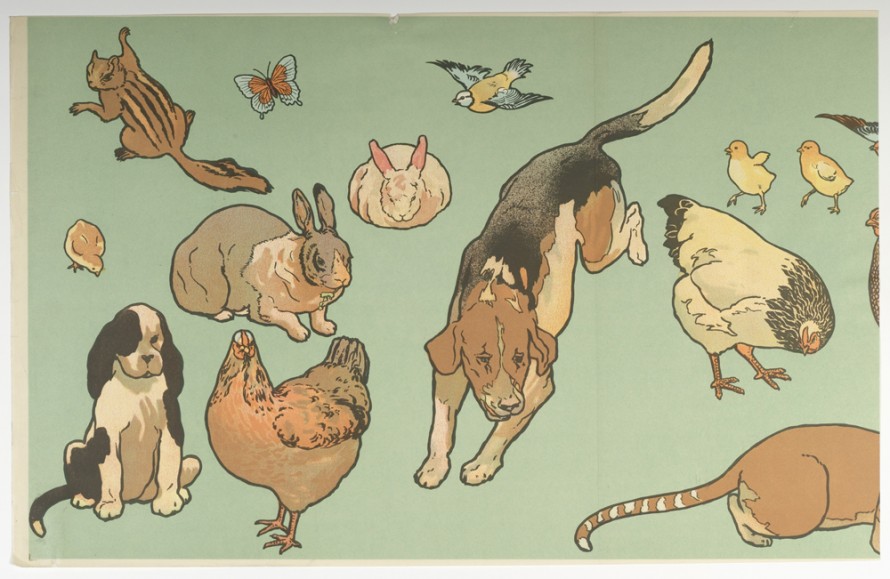The Schmitz-Horning Company was founded in Cleveland, Ohio in 1905 and was known for its lithographed borders and scenic wallpapers. One of its early papers was “Kindergarten Cut-Outs,” the first interactive wallpaper designed for children. These papers were sold as five-foot long panels at a cost of one dollar per panel. The paper in the Museum’s collection is not a full panel—as you can see, the cat has been cut in half. The paper could be applied in panels, or hung as a frieze with the decoration running continuously around the room. As the name “Kindergarten Cut-Outs” suggests, the animals could also be cut out and pasted to the wall, or they could be pinned to a fabric wallcovering to serve as both toy and decoration.
Prior to 1934, when wallpapers became truly washable, it was advisable to hang a fabric wallcovering, such as oilcloth or burlap, below the chair rail in a child’s room. This allowed the area most susceptible to dirt to be easily cleaned or painted as needed. It was very common in this era to combine multiple papers within a room. It was recommended to hang scenic borders at eye level for the child; decorative panels were usually hung above the chair rail or just out of a child’s reach. Another paper, with a stripe or small print pattern, would then fill the space between the border and the ceiling. The Schmitz-Horning papers were all printed in color by lithograph using oil pigments, which meant that the designs could be wiped clean. The printing technique also gives the design a soft look, reminiscent of a watercolor painting.
All of the animals on the paper are drawn in a realistic fashion. At the time, it was thought that natural representation would help children learn about and identify animals more effectively. Authorities believed that stylized or anthropomorphized animals would be confusing to young children.
